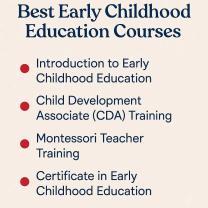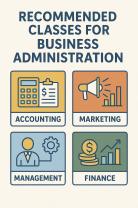How to prepare a Sunday school lesson?
Preparing a Sunday school lesson involves careful planning and consideration of the needs and characteristics of your students. Here's a step-by-step guide to help you craft an engaging Sunday school lesson:
Step 1: Pray and Seek Guidance:
Begin your preparation with prayer. Seek guidance and wisdom to deliver a lesson that aligns with the spiritual needs of your students.
Step 2: Understand Your Audience:
Know the age group and developmental stage of your students. Consider their interests, learning styles, and previous knowledge to tailor the lesson to their needs.
Step 3: Define Lesson Objectives:
Clearly outline the objectives of the lesson. What do you want students to learn or take away? Objectives provide a clear focus for your teaching.
Step 4: Select a Bible Passage or Theme:
Choose a relevant Bible passage or theme for your lesson. Ensure it aligns with the overall curriculum and the goals of your Sunday school program.
Step 5: Study the Bible Passage:
Thoroughly study the selected Bible passage. Understand its context, key themes, and any historical or cultural background that enhances interpretation.
Step 6: Craft a Central Message:
Develop a central message or key takeaway that you want students to grasp from the lesson. This message should align with the lesson objectives.
Step 7: Plan Engaging Activities:
Incorporate interactive and age-appropriate activities to engage students. This could include discussions, games, crafts, role-playing, or multimedia elements.
Step 8: Create a Lesson Outline:
Organize your lesson into a structured outline. Include an introduction, main teaching points, activities, and a conclusion. A well-organized lesson helps maintain focus and flow.
Step 9: Use Visual Aids:
Integrate visual aids to enhance understanding. This could include pictures, diagrams, props, or multimedia presentations. Visual aids can make the lesson more memorable.
Step 10: Application and Reflection:
Include a practical application component where students can reflect on how the lesson applies to their lives. Encourage discussion about real-life scenarios and how biblical principles can guide them.
Step 11: Prepare Discussion Questions:
Develop thoughtful and open-ended discussion questions. These questions can stimulate conversation, encourage critical thinking, and foster a deeper understanding of the material.
Step 12: Memorize Key Scriptures:
If applicable, memorize key scriptures that you want to emphasize during the lesson. This helps you speak confidently and reinforces the importance of scripture memorization for students.
Step 13: Incorporate Personal Stories or Examples:
Share personal stories or examples that relate to the lesson. Personal anecdotes can make the lesson more relatable and provide practical insights.
Step 14: Practice Delivery:
Practice delivering your lesson to ensure a smooth and engaging presentation. Pay attention to pacing, tone, and clarity. Practice also helps you become more comfortable with the material.
Step 15: Prepare Materials and Resources:
Gather all necessary materials and resources for the lesson, including handouts, visual aids, and any props. Ensure that everything is ready to go before the class begins.
Step 16: Evaluate and Reflect:
After the lesson, take time to evaluate and reflect. Consider what went well and areas for improvement. Use feedback from students or fellow teachers to refine future lessons.
Step 17: Pray for Impact:
End your preparation with a prayer, asking for the lesson to have a positive impact on the spiritual growth of your students.
Remember that flexibility is key. Be prepared to adapt your lesson based on the dynamics of the class and the needs of the students. Each class is unique, and your responsiveness to the Holy Spirit's leading can make your lesson more impactful.
Effective teaching strategies: How to prepare a Sunday school lesson?
When preparing a Sunday school lesson, it is important to consider the following:
- The biblical passage you will be teaching from. Read the passage carefully and meditate on its meaning. What are the key truths that you want your students to learn?
- The age level and learning styles of your students. Tailor your lesson to their developmental stage and interests.
- The educational goals of your Sunday school program. What do you want your students to learn about the Bible, Christian doctrine, or Christian living?
- A variety of teaching methods. Use a variety of teaching methods, such as storytelling, games, activities, and crafts, to keep students engaged and learning.
Here are some steps for preparing a Sunday school lesson:
- Choose a biblical passage to teach from. Consider the age level and interests of your students, as well as the educational goals of your Sunday school program.
- Read and study the passage carefully. Meditate on its meaning and identify the key truths that you want your students to learn.
- Develop a lesson plan. This should include the objectives of the lesson, the teaching methods you will use, and the activities that students will participate in.
- Gather teaching materials. This may include Bibles, workbooks, handouts, and other resources.
- Pray for your students and for God to bless your lesson.
Steps for planning and organizing a meaningful Sunday school lesson
Here are some steps for planning and organizing a meaningful Sunday school lesson:
- Start by choosing a topic or Bible passage that is relevant to your students' lives. What are they going through? What are they struggling with?
- Once you have chosen a topic, do some research. Read articles, books, and other resources to learn more about the topic. This will help you to develop a well-rounded lesson plan.
- When developing your lesson plan, be sure to include a variety of activities. This will help to keep your students engaged and learning. Activities could include singing songs, playing games, doing crafts, or discussing the Bible passage.
- It is also important to make sure that your lesson plan is age-appropriate. Tailor your activities and language to the age level of your students.
- Finally, be sure to pray for your students and for God to bless your lesson.
Tips for engaging students and promoting active participation in Sunday school classes
Here are some tips for engaging students and promoting active participation in Sunday school classes:
- Make your lessons relevant to students' lives. Show them how the Bible applies to their everyday experiences.
- Use a variety of teaching methods. This will help to keep students engaged and learning.
- Encourage students to ask questions and participate in discussions. Create a safe and supportive environment where students feel comfortable sharing their thoughts and ideas.
- Use technology to enhance your lessons. There are many resources available online and in software programs that can help you to create engaging and interactive lessons.
- Make your lessons fun! Use games, activities, and crafts to keep students interested and motivated.
By following these tips, you can create Sunday school lessons that are effective, engaging, and meaningful for your students.











